Introduction
Unlike Windows or macOS, Linux operating systems are virtually untouched by viruses or malware. In fact, some sources claim Linux is more immune to viruses than any other OS. But that is not entirely true—there are still threats, and you may want to consider antivirus software. The criteria analyzed here assess the real-time performance, overall protection level, program utilities, and ease of use that customers can expect for Linux solutions. Understanding antivirus options for Linux can help decide if a system requires extra security.
Linux servers power vast swaths of enterprise IT infrastructure. With 94% utilization in the public cloud and 90% of supercomputers, Linux runs the systems and sites businesses depend on. Meanwhile, Linux desktop usage continues rising across enterprises and consumer segments. Its increased role in critical functions means more extensive damage becomes possible if malware infiltrated a Linux system’s root access. Hence antivirus software plays an important role by adding extra assurance as users, data flow, and connectivity multiply on Linux.
Antivirus for Linux focuses more on signature-less heuristics combined with rootkit defenses instead of mammoth signature databases associated with Windows suites. The goal is to reinforce Linux’s inherent security advantages via process monitoring, abnormal filesystem changes and similar anomaly detection. Linux solutions must also operate lightweight to avoid hogging system resources in dense server deployments. Top Linux antivirus solutions maximize interoperability across environments with orchestration-friendly engines supporting containers, Kubernetes and microservices.

Key Features to Consider
Here are essential criteria to assess the quality and scope of Linux antivirus software:
1. Real-time Protection
Instant detection of malware and cyber threats is critical to prevent infections embedding into the system before detection. Capabilities like signature-less behavioral monitoring analyze processes in an always-on manner tracking insertion of rogue commands and subversion attempts. Integrations with vulnerability scanners further empower real-time security hygiene.
2. Firewall
A built-in firewall managing data traffic and filtering malicious or suspicious content is also valuable. Combining firewalling with antivirus reinforces Linux workloads through network traffic awareness. It should adapt policies per application risks and support orchestration templating.
3. Open-Source & Distribution Compatibility
Seamless support for open source platforms like Ubuntu, Debian and CentOS is vital along with maintaining Linux distro agnosticism to function correctly regardless of versioning differences. No proprietary dependencies or kernel customizations should exist. Container-friendly tools add value for cloud-native Linux.
4. Comprehensive Virus Scanning
Both real-time and on-demand scanning offers multidimensional detection strengths – the former to catch novel threats when initiated while the latter uncovers dormant infections through full system sweeps. Scanning reach across files, scripts and memory is key along with centralized visibility of security state.
Top Antivirus Solutions for Linux
Below are leading corporate-grade Linux antivirus systems with accompanying pros, cons and descriptions:
1. Bitdefender GravityZone Business Security
Pros: Flawless malware detection rate with low false positives, protection for physical servers, VMs and containers, built-in firewall and intrusion prevention
Cons: Advanced features require paid subscription
Summary: GravityZone Business Security brings enterprise-grade threat prevention to Linux systems with virtual patching, exploit mitigation and robust malware analytics. Behavior-based blocking and anti-ransomware secure data integrity.
2. Sophos Intercept X
Pros: Specialized server security, capable rootkit detection, crypto-mining malware protection
Cons: Steep learning curve for configuration
Summary: Intercept X for Server reinforces Linux workload security with signature-lessdeep learning malware models securing AWS, Azure and on-premise infrastructure.
3. Bitdefender Antivirus Plus 2020
Pros: Lightweight performance impact, consistently high detection rates, multi-platform support
Cons: Limited centralized management capabilities
Summary: Hardened malware and phishing protection for Linux desktops and servers featuring web attack prevention, privacy firewall and integrated Patch Management.

4. Kaspersky Embedded Systems Security
Pros: Secures specialized appliances and IoT devices based on Linux without desktop overhead
Cons: Focused exclusively on embedded Linux
Summary: Ultra-light security engineered for network gear, industrial systems and hardware appliances leveraging Linux, from ATMs to telecom routers.
5. Malwarebytes Incident Response
Pros: Cloud-based management for mass endpoint deployments, incident response retention policies
Cons: Requires cloud subscription and lacks hosted dashboards
Summary: Scalable carrier-grade virus detection supporting MSPs, MSSPs and enterprise SOCs defending large Linux endpoint fleets with backup malware scans.
6. McAfee Endpoint Security
Pros: Longstanding industry leader in Linux antivirus, open source optimized threat intelligence
Cons: Intensive resource consumption
Summary: Battle-tested signature-powered malware removal securing Linux systems with customized offline scanning, encryption and preemptive threat analytics.
7. Avast Ultimate
Pros: Free for personal usage with paid tiers for expanded capabilities, user-friendly interface
Cons: Underperforms against advanced malware threats
Summary: Straightforward antivirus solution for Linux desktops balancing usability with core signature malware protections, though detection rates visibly trail top corporate suites. Ideal for students, freelancers and basic home usage.
Installing Antivirus Protection on Ubuntu
Installing antivirus software on Ubuntu, a popular Linux distribution, typically involves two main tools:
1. ClamAV Anti-Virus
ClamAV is a widely trusted open source antivirus engine for detecting Trojans, viruses, malware and other threats using heuristic signature scanning optimized for Linux performance. It is licensed under GPL and available freely including source code.
2. CLamTk Graphical User Interface
CLamTk offers an optional graphical front-end to manage ClamAV giving users an intuitive interface to configure scan settings, view threats detected, quarantine infected files and review logs without needing the Linux command line.
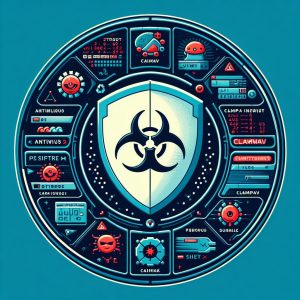
3. Installation Process
Here are the basic steps to set up ClamAV with CLamTk on Ubuntu:
- Run system update:
sudo apt update && sudo apt -y upgrade
- Install ClamAV:
sudo apt install clamav
- Start ClamAV daemon:
sudo systemctl start clamav
- Install CLamTk:
sudo apt install clamtk
- Launch CLamTk app or run clamscan CLI
- Review logs at
/var/log/clamav
- Schedule cron jobs for recurring scans
This makes ClamAV constantly run protection in background and CLamTk allows launching manual scans with visual management. Additional fine-tuning like exclusions, memory limits, multi-threading and mail server integration further builds out security.
Conclusion
Antivirus solutions offer important supplemental security for Linux in the expanding threat landscape consisting of not just viruses but also sophisticated malware strains aimed at covertly subverting systems and infrastructure for cybercrime, chaos or espionage. Evaluating options specifically designed for Linux without Windows baggage provides optimal protection.
Capabilities to weigh include real-time heuristics defending workloads through anomaly detection, firewalling to filter dangerous traffic, seamless integration across distros, environments and versions along with comprehensive scanning reach into entire systems. This well-rounded antivirus security layers on vital reinforcement for production Linux underpinning apps, data and services while maintaining the performance efficiency which makes Linux attractive for security-first organizations. Implementing Linux-compatible suites sustains trusted computing as threat actors increasingly probe for weaknesses.
I. Introduction
Intego is a Mac-focused cybersecurity company that develops antivirus and Internet security software designed specifically for Apple devices. Intego Antivirus has provided protection to Mac users for over 20 years. Its software aims to safeguard Macs with advanced anti-malware technology and extra utility tools in one comprehensive package.
With the rise in macOS threats in recent years through new malware strains, phishing attacks, and vulnerability exploits, Apple-tailored security has become increasingly vital. Mac users can no longer rely on the operating system’s built-in protections and require layered security. Intego Antivirus fills this need with specialized Mac capabilities for individuals, families and businesses.

II. Features of Intego Antivirus
Intego Antivirus provides robust malware protection along with various Mac computer enhancements:
Strong Anti-Malware and Virus Capabilities
The cornerstone of Intego Antivirus is the VirusBarrier component which leverages signature-less scanning to proactively block zero-day threats along with recognizing new variants of known Mac malware families. It can detect backdoors, spyware, keyloggers, bots, adware, ransomware, and more.
Both manual and scheduled scans are offered to actively check for dormant infections along with real-time detection of any malicious downloads or app launches. Suspicious apps are automatically blocked from installation or execution to prevent infiltration.
An quarantine space securely contains any malware threats detected until reviewed or removed by the user or administrator. Overall, independent lab testing verifies Intego’s anti-malware proficiencies placing it among the top Mac antivirus solutions.
Comprehensive Parental Controls
Intego includes rich parental control functionalities through its ContentBarrier tool aimed at families. It allows parents to restrict access to inappropriate websites using category-based content filtering spanning millions of pages. Age appropriate filtering can be enabled for kids and teens.
Network activity monitoring shows sites being accessed on a timeline along with chat conversations within allowed apps. Remote device screen time scheduling promotes healthy limits and balanced media consumption by children monitored from the parent’s system.
Together the parental control toolkit enables safe web surfing and device usage for youths under guidance customized to a household’s requirements. For example, gaming sites can be allowed but social networks disabled as needed per age policies.
User-friendly NetBarrier Firewall
Intego provides extensive inbound and outbound firewall protection through an intuitive interface named NetBarrier tailored specifically for Mac platforms. At its core, NetBarrier offers a set of granular network traffic filters controlling connections to and from apps using a positive security model.
For example, users can allow a vulnerable browser version to only contact the vendor’s update servers while blocking all other traffic. Advanced users can open firewall logs showing all network events like blocked and allowed connections for security analysis. Further custom rules can be created using parameters like port, IP address, protocol and bandwidth allotments.
NetBarrier makes firewall security accessible even for Mac consumers without networking expertise through clear visualization of app network behaviors. Controls drive sound safety practices and data privacy for everyday users.

Personal Backup Functionality
The Vault component of Intego Antivirus enables simple backups of important documents, media files and folders on a schedule or on-demand to preserve data backups. Storage space up to 2 GB is included or external drives can be utilized as backup destinations for flexible capacity.
Backup settings allow for comprehensive or targeted file selection along with scheduling for routine safeguarding of critical data against accidental deletions or emerging drive issues before loss. Email notifications confirm backups for reliability auditing while version histories support reverting from earlier archives if needed.
Mac Specialized Device Optimization
Intego builds a Mac-specific system optimization tool called Mac Washing Machine into its security suite as an extra advantage over Windows-inherited antivirus platforms. Mac Washing Machine cleans up unnecessary clutter and frees up drive space by removing gigabytes of useless junk files, language files, universal binaries, obsolete files, and system logs from macOS.
It identifies apps hogging battery life along with tracking installations and alterations to offer a detailed map of the systems state over time. Additionally, Mac Washing Machine can monitor CPU, disk and network usage spikes to troubleshoot performance problems or uncover suspect background activity indicative of malware.
Bringing native optimization attuned to macOS generates a more responsive, stable and secure computing environment benefitting the antivirus protection itself and the system’s operations overall.
Additional Security Features
On top of its core personal protections, Intego Antivirus includes supplementary capabilities sought by discriminating users:
- Email shield against malicious attachments and phishing links
- SMS/iMessage spam filtering using whitelist/blacklists
- Suspicious email forwarding to security provider sandbox analysis
- Reporting showing app internet usage metrics for tracking and control
- Surfing protection to prevent adware, spyware and drive-by-downloads
- Auto-lock functionality for associated kids’ devices during allowed usage-periods
Together these construct a private and secured digital experience personalized to safeguard modern lifestyles on Mac devices. Even basic subscriptions of Intego Antivirus gain advantages from these integrated offerings.
III. Pros and Cons
Intego Antivirus offers intriguing strengths but also comes with a few limitations to weigh for one’s specific needs:
Pros
- Excellent Anti-Malware Testing Results: Intego earns top scores from AV-TEST and AV Comparatives for malware protection efficacy on Macs surpassing most solutions. Its signature-less and heuristic monitoring competently combat Mac threats.
- Manual and Scheduled Scanning: Users can run instant checks for stealthy infections along with configuring daily or weekly recurring scans to remove dormant malware missed during real-time detection.
- Mac-Tailored Feature Set: NetBarrier firewall, personal backup, parental controls and optimizations like Mac Washing Machine cater capabilities to Mac environments lacking in cross-platform offerings.
- Light System Impact: Intego maintains high processing standards for MacBooks and iMacs with minimal slowdowns even during active scanning based on user reports. Its clean interface avoids overwhelming users.
Cons
- No Real-time Scanning in Basic Tiers: Missing modern baseline feature expected in premium software despite strong lab scores. Real-time protection requires purchasing higher-tier bundles.
- Limited Anti-Phishing Capabilities: Core emphasis resides on malware removal rather than sniffing out phishing lures which remain abundant on Macs. Lacks financial fraud alerts.
- Email Integration Gaps: Cannot plug directly into Apple Mail or Microsoft Outlook to filter spam and malicious emails at the client source. Relies on standalone shield component.
- No Mobile Protection: As a Mac solution, Intego leaves iOS and iPadOS devices unprotected. Fortifies macOS endpoints only.

IV. Additional Functionality
Beyond expected antivirus basics, Intego adds bonuses like Mac Washing Machine utilities that optimize and monitor Mac systems at a deeper level. These extras secure the user experience in meaningful methods other providers overlook.
For instance, Mac Washing Machine cleans storage wasted by useless system junk bloating devices over time. Recovered capacity indirectly improves performance and stability. As Macs heavily fragment drives, periodic optimization becomes critical yet Apple lacks native tools to deeply defrag directories, purge wasteful language packs unrelated to the region, or remove years of outdated binaries and logs clogging directories.
Mac Washing Machine fills the gap to streamline macOS maintenance. It can rollback troublesome system changes by apps gone rogue. Performance bottlenecks aroundCPU, disk or network spikes manifesting due to malware misuse also become visible for diagnosis and resolution.
Such holistic insights into Mac state generates awareness normal scanning misses for better resilience and usability. It demonstrates Intego’s specialization in tailoring utilities precisely for Apple ecosystem defense rather than just porting a Windows product over.
V. Expert Insights
Josh Long is Chief Security Analyst at Intego, overseeing research into Mac and iOS threats to guide the company’s security software strategy and roadmap. With decades of experience investigating malware campaigns, vulnerability disclosures and patching processes across operating systems, Long provides perspective on risks facing Apple users.
A common misconception Long highlights is the notion that Macs are largely immune to malware, thereby needing little protection. In reality, major attack waves have actively targeted macOS consistently including Flashback, Crisis, CoinThief, MacMaiba and OSX.Dok infections raiding encrypted user data, mining cryptocurrency stealthily, hijacking browsers with backdoors and spying via screen captures.
The threats remain persistent and evolving. For instance, in 2021 a surge of Shlayer malware infected upwards of 30% of Macs aiming to sneak adware with sophisticated defenses against removal. Long notes these samples evaded Apple’s own Malware Removal Tool proving deficiencies in native protections, unlike Windows where Microsoft Defender raises the base security bar significantly.
The paradox Long observes is that Apple’s tight control of macOS and App Store ecosystem curtails certain attack vectors but also slows adoption of modern security features for directly combating threats on endpoint devices themselves. Macs urgency cloud-based malware analytics, behavior monitoring and real-time memory scans rivaling Windows 10 and 11 counterparts.
Apple maintains Macs need little additional utilities despite clear threats going unaddressed. Hence Long believes Mac users should evaluate dedicated solutions like Intego Antivirus specialized for Apple environments yet unconstrained by Apple’s sluggish security advancements.
Introduction
Fortinet’s FortiGate firewall includes an integrated antivirus engine as part of its security capabilities. FortiGate Antivirus provides protection against viruses, malware, ransomware, and zero-day threats for networks. It leverages technologies such as flow-based inspection, proxy-based inspection, cloud-based analysis with FortiSandbox, and the FortiGuard antivirus service to detect threats.
Implementing antivirus at the network layer is an important element of an organization’s cybersecurity strategy. Antivirus inspection at the gateway firewall can detect threats before they enter the network and spread to devices. Additionally, central management of antivirus from a firewall consolidates administration and policy deployment. Overall, FortiGate Antivirus offers robust threat detection to safeguard networks with low latency impact.
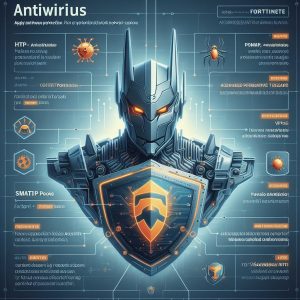
FortiOS Antivirus Features
FortiOS, the operating system of FortiGate firewalls, contains extensive antivirus capabilities:
Flow-based and Proxy-based Antivirus
FortiGate firewalls perform antivirus inspection in flow-based and proxy-based modes. Flow-based scanning analyzes network traffic transparently without proxying sessions. Proxy-based scanning proxies traffic so content can be fully decoded before inspection.
Administrators can configure custom policies determining which traffic goes through each mode for optimal performance and security. Proxy-based inspection offers the highest detection rate but also consumes the most resources.
Preconfigured Antivirus Profiles
FortiOS comes preconfigured with default profiles for antivirus inspection including default and wifi-default profiles. These contain optimal settings for networks and wireless access points. Additionally, administrators can fully customize profiles to match an organization’s requirements.
Customizable Inspection Rules
Within antivirus profiles, administrators have granular control to tailor security policies. Settings can be configured for:
- Inspection of protocols such as HTTP, FTP, SMTP, and more
- File size limits for scanning
- Blocking, monitoring, or allowing infected code
- Removal of viruses via heuristics
- Analysis with FortiSandbox
- Protection from botnet communication and callbacks
FortiSandbox Integration
FortiGate integrates with the FortiSandbox appliance, Fortinet’s advanced threat analysis sandbox. Suspicious files traversing FortiGate are sent to FortiSandbox for deeper inspection using techniques like emulation and behavioral analysis. The FortiSandbox database provides an added layer of cloud-based protection.
FortiNDR Inline Scanning
FortiGate also integrates with FortiNDR, Fortinet’s network detection and response platform. This allows for inline scanning of network traffic by the FortiNDR threat intelligence database in addition to FortiOS antivirus capabilities.
Exempt List
For files that generate false positives, FortiGate allows creating an antivirus exempt list to exclude files from scanning based on checksum. This prevents repetitive quarantining of clean files.
Quarantined File Download
Any files or code quarantined by antivirus inspection can be conveniently downloaded by administrators in password-protected archive format for review and analysis.
Profile Testing
Within FortiOS, administrators can upload samples of malware to securely test if an antivirus profile properly catches threats as intended. This verifies efficacy before deploying the profile into production.
FortiGuard Antivirus Service
Central to FortiGates antivirus capabilities is the FortiGuard antivirus service. This cloud-based service from Fortinet provides continuous updates that protect networks from the latest threats:
Broad Protection
FortiGuard offers wide security against malware, viruses, Trojans, worms, spyware, botnets, ransomware, and zero day attacks that may bypass traditional signature-based detection. The FortiGuard team closely monitors threat landscape globally for emerging attacks.
Content Pattern Recognition
Using proprietary algorithms and data science models like patented Content Pattern Recognition Language (CPRL), FortiGuard identifies new threats extremely quickly, often within seconds of outbreak. This allows immediate protections to be deployed to FortiGate firewalls globally.
Machine Learning and Signatures
The FortiGuard antivirus service uses machine learning techniques along with traditional signatures to catch threats. The combined approach ensures maximum detection of both known and unknown malware. Signatures remain essential for recognizing variants of known malware families.
Sandbox Integration
Fortinet sandwiches FortiGate between powerful tools on both sides as FortiGuard pairs with integrated FortiSandbox sandboxing. Network files can be inspected by multiple analytics systems simultaneously for uncompromising security.
Broad Platform Support
FortiGuard supplies threat intelligence for Fortinet products across the entire digital attack surface including firewalls, web applications, email, endpoints, servers and more. This allows coherent security policies across IT, OT and converged environments.
Endpoint Protection
Fortinet also offers FortiClient endpoint software leveraging the same FortiGuard threat intelligence as FortiGate firewalls. Teams can deploy antivirus with matching detection profiles across networks for harmonized cross-product protection.
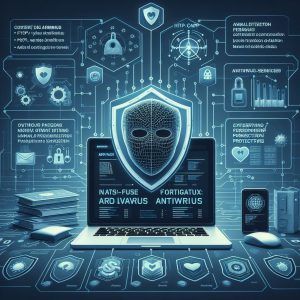
FortiOS Antivirus Inspection Modes
FortiOS antivirus protection utilizes two primary inspection modes:
Protocol Comparison
Below are key differences between flow-based and proxy-based inspection:
| Criteria |
Flow-based |
Proxy-based |
| Performance impact |
Lower |
Higher |
| Latency added |
Minimal |
Increased |
| Detection rate |
Moderate |
Maximum |
| Supports SSL inspection |
No |
Yes |
| How traffic is processed |
Transparent, non-proxy |
Proxy, decode content |
Protocol Support
FortiGate antivirus scans the following protocols:
- HTTP, HTTPS
- FTP, FTPS
- SMTP, SMTPS
- POP3, POP3S
- IMAP, IMAPS
- MAPI over HTTP
- CIFS
- SSH
- NNTP, NNTPS
Additionally, proxy-based inspection can be applied to user-defined applications and protocols for customized security.
FortiGate Antivirus Configuration
Fortinet allows extensive customization of antivirus profiles deployed to FortiGate firewall policies including:
AI-based Malware Detection
Machine learning and artificial intelligence can be enabled to detect malware patterns beyond traditional signatures. This probes deeper including analyzing code frequency, injections, encryption, obfuscation and polymorphism.
Antivirus Testing
Within FortiOS, sample malware files from Fortinet’s repository can be downloaded to test FortiGate’s integrated antivirus scanner against new threats. The system will provide a report with the detection result for profile tuning.
FortiOS Best Practices
Follow these guidelines when enabling FortiGate antivirus for optimal security and performance:
Maintain FortiGate
Always ensure antivirus signatures and firmware remain updated on FortiGate to catch latest threats with high efficacy. Schedule regular automated FortiGuard updates along with system vulnerability scans.
Select Necessary Protocols
Only enable antivirus scanning on the required protocols instead of blanket enabling all traffic inspection. Start with highest risk protocols first like HTTP, SMTP then expand accordingly. This prevents performance decline from unnecessary scanning.
Consider File Size Limits
Set conservative file size limits between 2 to 10 MB maximum on antivirus inspection rules. This reduces degrade from scanning extremely large files while maintaining safety. Video streaming and backups may be exempted from antivirus inspection entirely.
Monitor Quarantines
Review FortiGate’s quarantined files regularly to understand targeting threats and identify false positives to add to exempt list. Quarantined malware can be submitted to FortiGuard as new samples to improve detections.
Tune Logging
Avoid logging every single antivirus event which can quickly consume storage space. Focus logs on critical severity detections with traffic filters to capture required incidents. Forward logs to a SIEM for correlations and dashboarding.
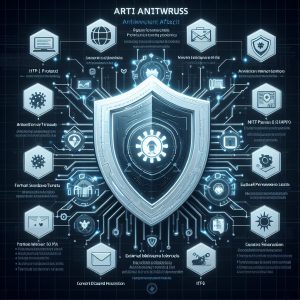
Minimize Inspection
Only enable security inspections like antivirus, IPS, and application control where explicitly needed instead of all traffic. This minimizes resource usage while allowing masking (NGFW mode) for positive security models and zero trust segmentation.
Consolidate Alerts
Set threshold counts and time durations along with event suppression rules to reduce repetitive alerts from the same infection vector. Alert storm protection is available in FortiOS 6.0 and above. Funnel alerts into reliable monitoring and response workflows.
Schedule Updates
Configure scheduled updates from FortiGuard servers to provide new antivirus definitions automatically as Fortinet release them to counter fresh threats. Include secondary update server for high availability.
Maintain Firmware
Stay current on FortiOS firmware updates which may bring antivirus detection improvements along with critical security patches and stability fixes. Test releases in staging environments first then progress to production.
Enable Services
Confirm FortiGuard antivirus and IPS services are enabled in the Fortinet support portal with valid licenses for full threat definitions from Fortinet’s research labs as updates emerge.
Conclusion
FortiGate firewalls include industry-leading antivirus inspection integrating multiple technologies like cloud analytics, sandboxing and machine learning to protect against malware threats targeting the network edge. Centralized control from FortiOS also simplifies policy administration and response workflows. With customizable profiles and extensive protocols support matching modern application traffic, FortiGate antivirus keeps organizations secure through proactive threat prevention. IT teams are advised to follow best practices and tune configurations for optimal efficacy through a harmony of performance and security within networks.
Introduction
As cyber threats grow more advanced and prolific, antivirus protection remains a critical component of security defense across endpoints and networks. Fortinet offers robust antivirus capabilities as part of its cybersecurity platform to stop malware, ransomware, spyware and other attacks targeting systems and data.
Leveraging insights from over 400,000 customers worldwide, Fortinet’s FortiGuard threat intelligence informs proactive protection enforced by Fortinet solutions. Integrated offerings detect known and unknown threats through signatures, heuristics and machine learning techniques applied across endpoints, email, web traffic, networks and clouds.
Staying on top of the evolving threat landscape is crucial as the World Economic Forum highlights cyber attacks as a top 10 global risk in terms of likelihood and impact, meriting vigilance by all individuals and organizations.

FortiGuard Antivirus Service
At the core of Fortinet’s antivirus capabilities is the FortiGuard Antivirus service, providing continuously updated detection models and signatures to all Fortinet platform products. With over 1 billion sensors worldwide supplying telemetry data, cloud-based FortiGuard AI engines rapidly identify emerging threats across the global attack surface.
By processing over 145 billion security updates daily, new defense signatures and updates can be pushed to customer endpoints in minutes to halt fast-spreading threats. The FortiGuard antivirus service leverages Fortinet’s Content Pattern Recognition Language (CPRL) for identifying malware characteristics efficiently with minimal false positives.
Broad Protection
FortiGuard protections shield against viruses, spyware, botnets, ransomware, rootkits plus variations of threats specifically designed to evade typical defenses. Outbreak prevention blocks newly identified sophisticated attacks and zero-day threats based on cloud analysis before local signature packages fully update.
Automated Updates
Signatures and detection models update automatically without any administrative effort. Real-time updates via FortiManager ensure customers continuously stay ahead of new attack campaigns as they emerge. FortiGate, FortiWeb, FortiMail and other Fortinet platforms seamlessly tap into FortiGuard data.
Technology Stack
Fortinet’s antivirus approach combines multiple techniques for maximum accuracy:
- Signature-based scanning detects known malicious code patterns
- Heuristic analysis identifies variants using suspicious characteristics
- Behavioral detection spots new threats based on abnormal process actions
- Cloud queries and machine learning models catch emerging attacks missed by traditional methods
Bringing together capabilities across endpoint, network and cloud is key to protect across today’s complex digital environments prone to attack.

FortiClient Fabric Agent for Endpoint Security
FortiClient extends Fortinet’s integrated cybersecurity platform to local devices using a lightweight agent providing enterprise-grade protections plus visibility and control:
Next-Generation Antivirus
Utilizing both signatures and AI-powered techniques focused on abnormal behaviors, FortiClient can stop malware before it executes. Linkage with FortiSandbox performs deeper inspection of unrecognized files.
Quarantine and Disinfection
Detected threats can be isolated locally before remediation steps disable and remove malware. Centralized visibility allows coordinated responses across security teams and devices.
Software Inventory
Detailed hardware and software inventory accelerated incident response with improved system integrity monitoring to detect unauthorized changes.
***Access Controls ***
Administrators can define policies around external devices, web filters, firewall rules and application access controls tailored to users, groups or devices. Controls restrict access to unauthorized cloud applications.
Automated Remediation
Remediation processes execute automatically containing outbreaks by isolating infected endpoints until threats are neutralized and systems restored. Orchestration eliminates reliance on manual reimaging.
FortiOS Antivirus
FortiOS provides core network security for Fortinet solutions across SD-WAN, switches, wireless access points and routers. Its integrated antivirus engine offers flexible deployment options:
Flow and Proxy Modes
Flow-based mode performs high speed scanning by extracting content from real-time traffic streams without proxying sessions. Proxy-based mode fully decrypts traffic for deeper analysis which is more thorough yet can impact performance.
Database types likewise tradeoff throughput versus detection rate. The Quick mode focuses on metadata for efficient scanning while Full mode fully unpacks and reconstructs content for maximum accuracy.
Configuration
Administrators can define antivirus profiles tailored to specific interfaces, user groups or traffic types. Different settings balance security versus connectivity needs for corporate networks, guest WiFi, employee devices etc.
Advanced Processing
Proxy mode enables specialized handling like decompressing files, decoding protocols, unpacking nested contents and more for detecting threats within encrypted traffic and obfuscated files. Stream-based scanning in proxy mode further boosts throughput.
Database options include cleaning infected files or more strict blocking. Content disarm and reconstruction removes detected threats from files while allowing safe contents. Outbreak prevention uses external threat feeds for quick identification of emerging attacks between signature updates.
Integration
FortiOS shares feeds with FortiSandbox for advanced analysis of suspicious files using isolated virtual environments. Sandbox integration allows flexible deployment modes – either redirection for non-intrusive inspection without delaying users, or inline blocking of suspicious traffic until sandbox results confirm safety.
Advanced Malware Protection Subscription
Fortinet offers bundled subscriptions which combine FortiGuard Antivirus with FortiSandbox Cloud sandboxing and Blended Threat Protection for countering known and zero-day threats:
Robust Protection
Together FortiGuard signatures, sandbox detonation, breach prevention and content reconstruction defend across the full attack chain from infiltration to exploitation to data exfiltration – stopping threats early before damage or loss occurs.
Key Features
- Antivirus detects known malicious code via signatures and heuristic analysis
- Sandboxing inspects unknown files by detonating them safely in a virtual environment
- Botnet IP/Domain security blocks communications with known bad sites/infrastructure
- Outbreak Prevention uses external threat intelligence to stay ahead of emerging attacks
- Content Disarm and Reconstruction removes exploits and allows safe file contents
This layered approach spanning FortiGuard and FortiSandbox provides trained professionals peace of mind their defenses are keeping pace with the threat landscape.

Conclusion
As cyberattacks grow more frequent, sophisticated and costly, the need for robust antivirus defenses has never been greater. Yet no single technique can catch all threats in today’s landscape – optimal protection requires a platform melding signature-based detection, cloud analytics, isolation sandboxes, outbreak prevention and content disarming together.
Fortinet provides exactly this integrated solution via the FortiGuard antivirus service augmenting scanning across FortiSandbox, FortiClient, FortiGate and the Fortinet Security Fabric. Seamless updates ensure customers maintain reliable protection against constantly evolving attacks. With over a billion threats identified yearly by FortiGuard Labs research, Fortinet security powered by machine learning gives organizations and individuals the capabilities needed to defend their critical systems and sensitive data.
I. Introduction
F-Secure Antivirus is a robust cybersecurity software suite that provides comprehensive protection against a wide range of online threats. Developed by Finnish company F-Secure Corporation, one of the pioneers in antivirus technology since 1988, F-Secure Antivirus leverages advanced heuristics and machine learning to catch the latest malware, ransomware, phishing attacks, and other cyber threats.
With over 30 years of experience developing security solutions for consumers and businesses, F-Secure has built F-Secure Antivirus to be an intuitive and user-friendly product that perfectly balances advanced protection with a lightweight system footprint. It offers one of the highest malware detection rates in independent lab tests, while still maintaining high performance.
In today’s digital landscape where cybercrime is growing exponentially every year, having a modern, adaptive antivirus solution like F-Secure Antivirus is crucial for defending your devices and personal data against compromise. This article will explore what sets F-Secure Antivirus apart from other options, providing an overview of its capabilities, customer experiences, pricing options, and concluding with expert perspectives on the growing importance of cybersecurity software.

II. F-Secure Antivirus Features
F-Secure Antivirus provides a robust feature set targeted at stopping the latest sophisticated malware and cyber attacks through multiple layers of protection:
Advanced Anti-Malware Engine
At the core of F-Secure Antivirus is an advanced anti-malware engine that leverages threat intelligence from analyzing over 12 billion security queries every day to catch new attack methods and adapt protections in real-time. Combining signature-based scanning with heuristic analysis and machine learning algorithms, F-Secure can stop malware before it executes with minimal false positives.
Regular automatic updates ensure the software has the latest signatures and behavioral detection models to catch fresh threats. F-Secure’s cloud-based systems give it an edge over competitors in responding quickly to new attacks spanning the globe.
Web Protections
As so much device compromise starts from malicious websites, F-Secure Antivirus has customizable protections to avoid phishing, watering hole attacks, exploit kits and other web-based threats. Real-time browsing protection warns users of risky sites, blocks exploits like zero days, and prevents unauthorized changes to browser settings.
The embedded firewall monitors network traffic and hides ports to prevent outside actors spying on user activity or compromising the device. Browser anti-tracking stops third parties secretly collecting information on people’s browsing habits.
Additional Security Features
On top of these core protections, F-Secure Antivirus includes additional tools targeted at families and premium users including:
- Parental controls to restrict access to inappropriate, dangerous or adult-only sites based on category blocking and whitelists
- F-Secure VPN for safely routing internet connections through encrypted tunnels when on public WiFi
- F-Secure ID Protection monitors personal information and alerts users in case of a data breach
- Password manager securely stores login credentials and generates complex random passwords
III. F-Secure Antivirus Review
In independent lab testing by AV-Test and AV Comparatives, F-Secure Antivirus consistently earns top marks for malware protection, low false positives, and having minimal impact on system performance. In AV Comparatives’ 2022 security software test, it blocked 100% of real-world threats with no false alarms.
Reviewers praise F-Secure Antivirus for being an easy-to-use and unintrusive cybersecurity solution:
Straightforward Interface
The user interface surfaces key info like protection status without excessive notifications or complicated menus. Controls are accessible to customize security levels, initiates scans, and view current threats. The online F-Secure account dashboard offers transparency into protected devices and alerts.

Lightweight System Footprint
By optimizing processes to minimizing resource usage, F-Secure has achieved one of the smallest footprints among top antivirus programs. With efficient coding and cloud offloading, it uses less RAM and CPU than many competitors, keeping systems running fast.
Reliable Customer Support
F-Secure receives high marks for their responsive and knowledgeable customer support when any questions or issues arise. Support options include instant chat, phone support, online knowledge base articles and an active user community forum.
Compared to antivirus suites like Norton, McAfee and TotalAV which earn lower ratings for bulky system drag and convoluted interfaces, F-Secure strikes an excellent balance between usability and protection. Combining air-tight security defenses with a lightweight and intuitive package makes F-Secure a user favorite.
IV. F-Secure Antivirus Plans & Pricing
F-Secure Antivirus is available as F-Secure SAFE, F-Secure FREEDOME, and F-Secure TOTAL suites with increasing levels or security and VPN features. Each suite is available on monthly or annual subscription models. Currently prices are:
F-Secure SAFE provides essential antivirus and browsing protection.
- $39.99 per year covering 3 devices
- $6.66 per month month-to-month
F-Secure FREEDOME adds privacy features with a VPN.
- $59.88 per year covering 5 devices
- $8.33 per month month-to-month
F-Secure TOTAL has maximum security and VPN on an unlimited number of devices.
- $104.87 per year
- $12.49 per month month-to-month
This mix of pricing tiers allows both individuals and families to pick the right level of security, features and number of devices needed for their use case. Each suite works across Windows, Mac, Android and iOS operating systems. For users seeking minimal antivirus protection, F-Secure SAFE delivers the same award-winning malware catching capabilities in a value-focused package.
V. Cyber Security Threats & F-Secure’s Guide
With digital crime on the rise, F-Secure estimates almost a million new malware samples appear every single day. Cyber criminals deploy automated hacking tools to carry out software supply chain attacks, ransomware campaigns, stealthy botnet recruiting and sophisticated phishing lures tailored to each target. State-sponsored groups also increasingly engage in cyber espionage against political and economic targets.
No one is immune from attack – individuals, small businesses, schools, hospitals, non-profits and government agencies have all fallen prey. The surge in work-from-home during the pandemic expanded the digital attack surface with employees relying more on home networks vulnerable to compromise. Over half of businesses surveyed were impacted by a cyber incident over the past year.
Against the climate of highly-motivated criminal groups and nation states continuously escalating their technological capabilities, F-Secure stresses that simply hoping you will not be targeted is no longer a viable option. Proactive cyber security defenses need to be implemented across devices, networks, users and operations.
Antivirus Protection Essential
While no solution offers 100% protection, installing a modern antivirus program is the bare minimum step everyone should take immediately. Signature-based detection of known threats matched with heuristic behavioral analysis to catch zero-day threats can block the vast majority of attacks seen in the wild. Vulnerability assessments, application controls, firewalls and encryption provide additional protection layers.
For home users, installing antivirus software like F-Secure across Windows PCs, Mac computers, iPhones and Android devices establishes critically-important defenses. Updating software, enabling automatic scans, and adopting cautious browsing habits drastically reduces exposure.

Beyond Endpoints
However, in today’s environment companies can no longer focus security efforts solely on endpoints and perimeter-based controls. With distributed applications, cloud migrations and work-from-home, sensitive data moves beyond the traditional network edge. Holistic controls need to monitor user access, secure code quality, multi-factor authentication, best practice configurations, patch management and more.
F-Secure’s solutions scale from home antivirus up to managed detection and response services used by banks, airlines, technology giants and various industry verticals to hunt threats and orchestrate response across their digital estates. World-class threat intelligence informs protections across endpoint, cloud, network and vulnerability management offerings.
VI. Conclusion
F-Secure Antivirus brings award-winning cyber protection powered by over 30 years perfecting security software. Its advanced anti-malware engine backed by machine learning and threat research stops sophisticated threats missed by competitors, while maintaining a tiny footprint that keeps devices running fast.
The intuitive interface surfaces key info without bombarding users with unneeded clutter or notifications. Controls allow customizing security levels to balance protection versus convenience. Multi-layered defenses across antivirus, web protections, online privacy tools, password management and more create a comprehensive solution targeted at today’s threat landscape.
With digital crime exponentially rising year over year, F-Secure stresses that cybersecurity can no longer be an afterthought for individuals or organizations. Installing robust antivirus protection on all computing devices, paired with caution around links, attachments and sharing personal info, represents the bare minimum to reduce compromise in today’s threat climate. F-Secure Antivirus delivers award-winning, adaptive security software powering this first line of defense.
I. Introduction
Antivirus software is a critical component of security for safeguarding devices and data in the modern digitally-connected landscape. As malware and cyber threats grow more advanced and ubiquitous, robust antivirus protections provide a fundamental layer of defense.
A. Brief overview of antivirus software
Antivirus software refers to programs designed specifically to detect, block, and remove various forms of malicious software or “malware” including viruses, worms, trojans, spyware, adware, ransomware and more. It utilizes techniques like signature-based scanning, heuristic analysis, emulation, and more to identify threats and prevent infection or exploitation.
Antivirus protects devices like desktops, laptops, smartphones and servers by scanning files, memory, boot records, firmware, and other potential infection points on a regular basis to flag malware. When threats are discovered, the antivirus will attempt to quarantine, delete or clean the associated files or system alterations to remove the infection. As long as the antivirus signatures and security definitions stay updated, it serves as an effective shield against most common malware.
B. Importance of antivirus software in today’s digital landscape
With the average cost of a data breach now reaching $4.35 million in 2022, plus potential reputational damage and operational disruption, protecting infrastructure through security tools like antivirus has become imperative for organizations and individuals alike.
Cybercriminal efforts are ever-evolving, with 350,000 new malware samples observed daily. Phishing, drive-by downloads, malvertising and other social engineering ploys uniquely target human vulnerabilities rather than purely technical defenses. Rigorous security hygiene through antivirus, firewalls, access controls and user education serves as a crucial safety net mitigating risk and preventing incidents in the face of this relentless onslaught of attacks leveraging malware as a preferred infection vector.
Failing to maintain comprehensive antivirus protections leaves digital assets dangerously exposed at a time when data security carries elevated importance, tangibly impacting bottom lines and even national security interests.

II. Personal Antivirus Software
Antivirus tools geared toward home users and designed to run locally on consumer devices tend to prioritize ease of use, minimal impact on system performance, and integration with other security utilities over advanced protection capabilities more common in enterprise-level software suites better resourced to handle elevated complexity.
A. Scope of protection
Personal antivirus solutions focus on safeguarding individual devices most vulnerable to threats like laptops, desktops, tablets, and smartphones rather than expansive networks of systems. Protection revolves around scanning storage media, blocking malicious sites/files, and monitoring system behavior for signs of infection or exploitation activity.
1. Individual devices (laptops, PCs, smartphones)
Personal antivirus runs locally on devices, shielding operating systems from infection via scans of internal and external storage media, email attachments, downloads, and even web traffic in some cases. Protection scales to the hardware capabilities of each device.
B. Deployment
Rather than centralized management, home antivirus tools get installed or activated directly on each device through self-service apps or activation using license keys. Cloud-linked dashboards may provide visibility across protected endpoints for monitoring and maintenance.
1. Installed on each device
Users download antivirus apps or suites onto laptops, phones, and other consumer gadgets independently, maintaining software updates and otherwise configuring preferences device-by-device.
C. Security features
Basic protections akin to malware/virus scanning, email/download monitoring, firewall activity blocking and web filtering typically comprise the core capabilities of consumer-grade antivirus platforms as opposed to the full-fledged endpoint detection and response stacks seen in business contexts.
1. Basic malware and virus protection, firewall
At minimum, home antivirus will scan files/applications on disk and memory for malware signatures, block connectivity for suspicious traffic patterns, inspect web URLs accessed through browsers, and match other basic indicators of compromise associated with commodity malware and mass threats. But more advanced protections largely remain absent.
III. Business Antivirus Software
Enterprise-focused antivirus solutions trade enhanced protection breadth, depth and manageability for substantially greater cost and configuration complexity – a tradeoff the much higher stakes of organizational malware disruption and data theft warrants.
A. Scope of protection
Rather than just safeguarding a handful of consumer devices, business antivirus solutions secure potentially thousands of networked endpoints across entire companies including servers, user workstations, remote systems, cloud infrastructure, mobile/IoT gear and more under a “security umbrella”.
1. Networked devices (servers, desktops, laptops, mobile devices)
Robust enterprise antivirus leverages domain integration, group policy administration controls and centralized dashboards to monitor and enforce advanced malware protections for sometimes tens of thousands of business devices simultaneously including mission-critical servers alongside employee laptops, mobile phones enrolled via MDM and everything in between.
B. Deployment
Managed through server-based centralized consoles, enterprise antivirus gets pushed to endpoints across the network, allowing for remote installation, updates, configuration changes, scan scheduling and security management en masse rather than piecemeal.
1. Centralized management and deployment, often cloud-based
IT administrators send out antivirus platform updates, rule changes and installation commands through unified portals as opposed to local self-service, enabling consistent security policy enforcement under centralized authority and oversight at enterprise scope. Cloud-hosted management capabilities further aid unified control of distributed environments.
C. Security features
Business-oriented antivirus platforms incorporate advanced detection techniques like machine learning-driven behavioral anomaly detection, deceptive sandbox environments, firmware scanning, and deep integration with other terminal security tools to identify sophisticated threats which trip up consumer-grade protections.
1. Advanced features like sandboxing, real-time protection, and remote management
Commercial antivirus graduates beyond basic signature scanning to add proactive capabilities purpose-built to flag zero-day exploits like:
- Cloud-augmented malware intelligence updating protections against new attack patterns in real-time
- Memory injection interception stopping stealthy in-memory payloads
- Decoy sandbox environments tricking behavior-based threats into revealing themselves
- Encrypted traffic inspection defusing HTTPS-masked infections
- Full disk and firmware scanning unmasking deeply embedded rootkit infections
- Remote containment allowing immediate isolation of infected nodes
- Device control policies checking unauthorized peripheral usage
- Security activity event centralization and automated alerting
These enterprise-level features recognize and halt advanced threats consumer antivirus misses, though at a proportionally elevated cost and skill investment to operate effectively.

IV. Free vs Paid Antivirus Software
Weighing whether to invest in premium antivirus capabilities requires examining the constraints of freeware against the expanded protection horizons commercial suites unlock to make the right choice per individual tolerance of risk versus cost.
A. Key differences between free and paid antivirus solutions
Free antivirus protection leverages signature scanning alongside cloud intelligence about prevalent threats to identify and isolate common malware strains while paid options incorporate advanced heuristics, machine learning and other enhanced techniques to catch sophisticated threats zero-day freeware fails to recognize.
B. Pros and cons of free antivirus software
Free antivirus strikes an appealing balance for cash-conscious consumers…with some substantial caveats:
1. Limited protection, mostly reactive
Freeware antivirus relies heavily on static signature libraries to pinpoint only previously documented malware strains. Until a threat’s signature gets identified and added to definitions, zero-day exploits often slide right by. Protection lags threats rather than proactively intercepting.
2. Cannot detect unknown threats
Without robust heuristic scanning logic, sandboxing environments, malware analytics or other advanced detection mechanisms, novel evasive malware outside cybercriminal commodity kits easily defeats free antivirus lacking the context to flag such threats as suspicious.
C. Pros and cons of paid antivirus software
Paid antivirus delivers markedly expanded security scale yet carries a recurring financial cost factoring into the value proposition:
1. Advanced security features, proactive protection
Commercial suites contain a diversity of complementary detection approaches from attack pattern analytics to behavioral anomaly monitoring which expose even unique zero-day threats exhibiting the hallmarks of malware without matching any specific signature. Prevention occupies a top priority.
2. Protection from unknown threats
Going beyond surface level scans, multi-layered paid endpoint protection platforms leverage isolation environments, deep packet inspection, process DNA mapping and other techniques to reveal novel threats before they have a chance to spread or trigger catastrophe.
D. Choosing the right antivirus software for your needs
Ultimately both free and paid business and consumer antivirus options bring distinct advantages and disadvantages. Prioritizing cyber incident protection investments based on specific risks posed by potential malware disruption offers the most effective way to navigate the complex modern threat landscape.
Evaluating factors like sensitivity of accessible data, regulatory compliance burdens, frequency of networked access granting infection vectors entry, human vulnerability to social engineering, effectiveness of complementary security controls like firewalls or backups, and overall tolerance for malware-linked business disruption guide wise investment.
Home users face far lower stakes around potential malware incidents relative to heavily networked enterprise environments with extensive sensitive data stores and mission-critical infrastructure to defend. As such, paid solutions make obvious sense for organizations but potentially overkill for cautious individual consumers even given limitations of freeware. Properly weighing these tradeoffs determines ideal antivirus posturing.
V. Anti-Malware vs Antivirus Software
While the terms get used interchangeably, some subtle feature differences exist between anti-malware and antivirus software in terms of malware scope, protection capabilities and deployment – distinctions that can inform specialized security tooling choices.
A. Differences between anti-malware and antivirus software
Traditionally antivirus tools focus specifically on targeting computer viruses in particular while anti-malware solutions take a broader approach to combatting viruses alongside worms, trojans, spyware, adware, ransomware, rootkits and other threats under the wider malware umbrella. Otherwise anti-malware apps closely resemble antivirus functionally.
B. When to use anti-malware software
The more expansive purview of anti-malware software makes it appealing for consistent, general purpose malware protection on endpoints likely to encounter multiple threat varieties. Particularly when antivirus gaps may leave spyware, adware or ransomware protection lacking, anti-malware picks up the slack.
C. When to use antivirus software
Antivirus may better suit specialized use cases like shielding servers hosting sensitive data from specifically virus-based threats, where the somewhat broader focus of anti-malware risks performance overhead without notably expanding protection given the more limited risks lacking heavy exposure to web and email-based vectors more likely to introduce diverse malware strains.
For broader endpoint protection against an array of attack vectors, anti-malware solutions carry an advantage in threat scope. But for streamlined, performance-optimized scanning against common infection vectors on infrastructure like servers, antivirus can make more sense assuming protections against other malware remain covered through layered controls.
VI. Conclusion
A. Recap of the importance of antivirus software
Antivirus software enables fundamental protections which defend devices and networks against prevalent cyber threats attempting to infiltrate environments using malware as the exploit vehicle of choice. Securing endpoints via antivirus dramatically reduces attack surface area and hardens systems against compromise, preserving functionality and trustworthiness of infrastructure both locally and at enterprise scale.
B. Final recommendations for choosing the right antivirus software for your needs
Carefully evaluating risk factors like sensitivity of accessible data, likely malware infection vectors based on system connectivity and user behavior, effectiveness of auxiliary defenses like firewalls and backups, regulatory mandates, and overall disruption tolerance allows methodically deciding where investing in advanced paid antivirus capabilities makes prudent sense versus relying on consumer freeware options.
For cash-conscious home users already practicing cautious computing habits, free antivirus can provide “good enough” security. But businesses managing extensive sensitive data stores and mission-critical infrastructure face far higher stakes around potential malware incidents – meriting proportional investments into robust, proactive threat detection and response via commercial-grade antivirus suites purpose-built to lock down vulnerabilities at enterprise scale.
Regardless of solution chosen, maintaining reliable antivirus protections adapted to match the evolving threat landscape through vigilant updates remains non-negotiable for sustaining adequate security posture in our abundantly interconnected world where malware dangers lurk around every corner.
I. Introduction to Antivirus Software
Antivirus software is an essential tool used to prevent, detect, search, and remove various types of malicious software, including computer viruses. At its core, antivirus software works by scanning files or systems to identify threats based on definitions of known malware. When a virus or other potentially unwanted program is detected, the antivirus will attempt to remove or quarantine the threat to prevent infection.
Definition of antivirus software
Antivirus software, sometimes referred to as anti-malware, is any software designed and developed specifically to detect, prevent, and remove malicious software including computer viruses, worms, trojans, ransomware, keyloggers, rootkits, spyware, adware, and other threats. These programs use techniques like signature-based detection, heuristic analysis, sandboxing, and more to identify threats.
Modern internet-connected computer systems face constant evolving threats from malicious software which can infect systems, steal data, encrypt files for ransom, transmit private information, or cause other types of harm. Installing and regularly updating antivirus software is a fundamental security practice for protecting computers and networks.
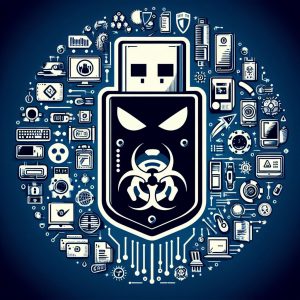
Purpose: to prevent, detect, search, and remove viruses and other types of malware
The main purpose of antivirus programs is to safeguard computers, servers, and systems from infection by dangerous malware. This includes:
- Prevention: Antivirus software uses real-time scanning and activity monitoring to block malware infections before they occur by detecting virus signatures, analyzing behavior of programs for signs of malicious intent, or identifying other indicators of threats.
- Detection: One of the primary jobs of antivirus software is to continuously check for malware across filesystems and memory using signature matching, heuristics, rootkit detection, and other techniques to identify threats that may exist on the system.
- Search and removal: When an antivirus program flags malware, it will typically quarantine the infected files or data to isolate the threat. Additionally, it will attempt to repair system alterations made by the infection or restore encrypted files after ransomware attacks. Some antivirus even search for dormant malware and remove threats before they have the opportunity to cause harm.
Having this malware protection in place can prevent considerable harm, from loss of sensitive documents and credentials to man-hours lost rebuilding systems compromised by viruses and worms.
II. Types of Antivirus Software
Many types of antivirus software leverage different technologies and approaches to protect systems from malware-based threats. Understanding the capabilities of various antivirus programs is important for selecting tailored solutions for individual needs.
Overview of various antivirus software types
There are a wide variety of antivirus solutions available, typically falling into a few major categories:
- Traditional antivirus uses signature-based detection alongside heuristics to identify malware. Effective at catching known threats but often fails to protect from zero-days and advanced attacks.
- Internet security suites bundle antivirus capabilities with a firewall, parental controls, anti-phishing, identity protection, and other security tools. Convenient for home users looking for an all-in-one option.
- Endpoint protection platforms combine antivirus with multiple layers of threat detection and response features aimed primarily at enterprise environments. Tools like threat intelligence feeds, sandboxing, EDR, and centralized reporting and management capabilities take endpoint protection to a higher level.
- Specialized scanners which focus on detecting specific sub-types of malware like ransomware or rootkits. Helpful as a secondary layer of malware defense.
- Cloud-based antivirus leverages always-updated threat data and processing power in the cloud for light-weight yet highly effective protection, especially appealing for devices with limited local resources.
With threats advancing at a rapid rate, modern antivirus solutions leverage a diversity of complementary approaches for defending endpoints across various attack surfaces.

Importance of antivirus software for computer and data security
Antivirus and anti-malware tools play an extremely important role in safeguarding the security of computer systems and user data in both consumer and business contexts. Given the level of disruption, financial damage, and privacy invasion malware infections can inflict, antivirus protection is fundamental to maintaining functional integrity and trust in information systems.
Without adequate antivirus protections, malware threats leave computers and networks vulnerable to:
- Data breaches exposing confidential documents and communications
- Identity theft enabling fraud and account takeover
- Extortion via ransomware rendering files and systems unusable
- Cryptocurrency mining sapping computational resources
- Supply chain attacks providing backdoors for further compromise
These outcomes can range from inconvenient to outright catastrophic. Antivirus solutions are the frontline defenders standing between endpoints and the relentless onslaught of malware which threatens productivity, security, and user privacy around the globe.
As malicious techniques grow more advanced, so too must cybersecurity tools and practices evolve to meet emerging threats. Antivirus or anti-malware software, when properly implemented and maintained, forms the foundation for establishing resilient protections in the escalating battle against malware.
III. USB-Based Malware Attacks
While many antivirus solutions focus primarily on securing host operating systems and files, threats targeting removable USB flash drives and exploits leveraging USB connections as an infection vector remain prominent attack surfaces which comprehensive protections must also address.
Discussion on the resurgence of USB drive malware attacks in 2023
USB-based malware went into relative decline earlier in the 2010s but has seen an uptick in cybercriminal use and innovation recently. According to cybersecurity researchers, 2023 has so far brought surging volumes of USB attacks, building upon significant spikes seen in 2022. In particular, incidents of “USB drop” attacks have risen drastically, taking advantage of natural human curiosity to trigger infections.
In these schemes, malicious actors strategically leave infected USB devices in public locations, enticing unaware victims to pick them up and plug them into computers, thus unlocking malware and potential access for attackers. This presents a challenge to organizations as careless or untrained employees without ill intent unwittingly introduce advanced threats past IT defenses focused more on blocking remote exploitation.
Further augmenting the damage of this resurgence are dangerous new USB-based exploits like Quintessential, specifically engineered to stymie detection by antivirus tools by hiding its code in keyboard emulation routines. The re-emergence of USB attacks has caught some organizations off guard as focus shifted more heavily to cloud and web-based threats in recent years while legacy attack vectors were not completely shut down.
Unique advantages of USB-based attacks, such as bypassing security mechanisms and infecting air-gapped systems
The very nature of USB devices, designed primarily for portability and external data transport, lend certain unique advantages to bad actors aiming to circumvent traditional network perimeter defenses using social engineering and physical access:
- Bypasses network security – Malware lurking directly on USBs sidesteps firewalls, intrusion prevention systems, and other network security layers intended to keep threats at bay.
- Defeats air-gapped systems – High security networks with strict physical separation from other endpoints rely fully on isolates systems bereft of outside internet access. But a single infected drive can defeat this protection.
- Enables stealthy persistence – USB firmware rootkits and boot sector viruses can embed themselves stealthily on USB devices at such a deep level, reformatting drives doesn’t fully remove the threat.
- Difficult detection – Multifaceted malware utilizing rootkits, encryption, and authentication makes identifying and studying advanced USB threats complex for defenders.
These factors allow USB-based attacks to slip past mitigations focused more exclusively on securing networked entry points, highlighting why vigilant cross-channel defenses remain so vital in the modern threat landscape.

IV. USB Antivirus Protection Solutions
With malware exploiting removable storage devices on the rise again, relying solely upon securing network perimeters or host antivirus defenses proves increasingly inadequate. Organizations must reevaluate protections for these direct-access threat vectors via layered USB antivirus solutions tailored to address the challenges of malicious USB-based exploitation.
Investigation of USB-based software attacks on host computers and USB storage devices
Malicious USB-based exploits target two primary segments: attacking host computers when infected USB devices connect to them, or compromising the USB drives themselves for deeper persistence and deliverability.
USB worms take advantage of autoPlay features which automatically execute code on connection. Ransomware scans available drives and encrypts files on removable media. Backdoors covertly allowing remote access can also transmit themselves via USB to hop air gaps.
On the USB side, schemes range from simple virus injection to sophisticated firmware rootkits or hardware implants undetectable from host scanning tools. Injected microcontrollers and other strategies also manipulate USB behavior to enable covert data collection, device tracking, password interception, or remote computer control.
These multilayered threats underscore the need to secure the full ecosystem surrounding USB activity, protecting both the integrity of host systems and USB media as well as fortifying the connections between them.
Importance of USB antivirus protection in the face of spiking USB drive malware attacks
Legacy host antivirus protection depending primarily on signatures and simple heuristics often fail utterly against novel USB-based malware not matching common patterns. Likewise, focusing solely on guarding USB devices using average consumer AV leaves mission-critical workstations open to corruption via compromised portable media.
With threats advancing rapidly as USB attack prevalence rebounds to former peaks, organizations must integrate robust protections purpose-built to shield the unique vulnerabilities in the USB attack surface including:
- Real-time scanning of attached removable media
- Advanced heuristic detection attuned to USB threat behaviors
- Automated quarantining of suspicious USB device firmware
- USB device usage policy restrictions
- Custom whitelisting of authorized USB devices
- Physical USB port blocking overrides
- Granular USB behavior analytics monitoring for anomalies
- Automatic encryption of USB drive contents
Only multidimensional protections spanning host systems, removable devices, AV detection logic fine-tuned for USB-borne malware, and administrative policy controls can address the complex challenges USB-based threats impose.
V. Conclusion
Antivirus and anti-malware tools serve as the foundation and first-line of defense for security strategies protecting endpoints from the real danger malware represents in both enterprise and consumer technology environments. As threats grow more cutting-edge, so too must cybersecurity tooling evolve using advanced heuristic logic, secure system design principles, and cross-channel protection schemes to meet sophisticated attacks head-on.
In particular, the resurgence of USB-based malware over the past two years highlights chronic gaps between legacy host endpoint security measures and emerging attack vectors which require focused controls purpose-built to account for the unique advantages and techniques leveraged by removable media-based threats.
Organizations relying heavily on antivirus protections must ensure mature solutions specifically hardened against USB-borne malware through robust storage media scanning, refined detection capabilities eliminating blind spots for removable drive attacks, automation to handle suspicious devices safely, and layered administrative policy controls governing all aspects of USB activity end-to-end.
Accounting for often overlooked threats creeping back into the spotlight remains imperative in upholding reliable, trustworthy security posture as the cyber landscape shifts over time. Dedicated controls resolving the shortcomings of conventional protections are vital not only for blocking disruption, but also for enabling business continuity, operational efficiency, and user trust by upholding endpoints resilient to escalations in cunning attacks targeting high-value computing assets.
I. Introduction to Bootable Antivirus
As sophisticated malware grows increasingly capable of compromising traditional installed antivirus software, emergency response platforms known as bootable rescue discs provide an essential last line of defense cleaning severely infected systems using specialized standalone environments independent of the host operating system.
Bootable antivirus solutions run from external media like CDs or USB drives rather than main system hard disks, allowing deeper scanning and removal of persistent threats that resist typical antivirus countermeasures by operating at levels below standard OS detection capabilities. By booting systems separately from main OS installations, bootable tools gain exclusive access verifying integrity or removing infections.
For individuals and managed IT teams needing to thoroughly disinfect corrupted systems or recover files safely after damage, maintaining a bootable antivirus toolkit proves indispensable offering lifeline restoration capabilities when malware locks out traditional protection solutions by exploiting underlying OS layers themselves.

II. How Bootable Antivirus Works
To understand bootable antivirus fully requires familiarity with the layered boot process occurring as computers start – from initial BIOS, bootloader, kernel loading steps onwards ultimately to the final operating system initialization phase. By intercepting early in sequence, emergency discs take control before any mainstream OS components activate.
BIOS and Boot Priority The boot sequence commences within system BIOS firmware evaluating bootable devices by order of priority set in BIOS settings. Bootable CD/DVD drives and USB ports typically sit below hard disk bootloader regions allowing emergency discs first access launching their specialized environments.
Independent OS Kernels Rescue media contains standalone operating systems on transportable read-only media allowing launching independently, bypassing installed hard disk contents, using customized bootloaders containing antivirus tools exceeding the OS permissions levels viruses often exploit as hideouts avoiding scanner visibility.
Isolation Environment With exclusive access before host operating systems engage any processes, boot rescues obtain uncontrolled ability forcibly scanning, removing and restoring damaged files evading detection or manipulation by malware leveraging administrator privileges on installed systems guarding against tampering threats faced by traditional antivirus products once infections take hold.
III. Popular Bootable Antivirus Tools
Myriad bootable options exist but most reputable Internet security vendors offer specialized emergency response ISOs configurable to organization needs and optimizing advanced disinfection tools through familiar interfaces despite the separate underlying environments.
ESET SysRescue Live Utilizing ESET’s distinguished NOD32 antivirus technology, SysRescue Live boot CD incorporates their latest real-time scanners and rootkit detection know-how into a conveniently bootable Linux-based OS tailored for removing stubborn malware or reconstructing unbootable Windows systems post-infection.
Dr.Web Live Disk Russian antivirus specialist Dr.Web is celebrated for innovative behavioral analysis advancing heuristics beyond competitors. Dr.Web Live Disk distills these self-protection capabilities into a compact 300MB bootable tool equally capable cleansing disastrous infections as precisely identifying emerging threats lingering across restored systems.
Comodo Rescue Disk Boasting one of most skilled antivirus engines augmented by cutting-edge containment sandboxing unique to Comodo, their bootable Comodo Rescue Disk strikes an ideal balance bringing hardened malware treatment utilities through familiar interfaces without superfluous features bogging down conveniently compact ISO downloads under 300 MB.

IV. Features and Functionality
While stripped down environments deliberately to reduce attack surface threats could exploit, bootable antivirus platforms retain a variety of specialized repair tools matching or exceeding capabilities accessible within full-featured host installations.
Custom Scans Both targeted and comprehensive system inspection abilities guide remediation effort with fine-grained control – encompassing deep region-specific sweeps across partitions and boot sectors alongside lightning fast checks of pre-defined infection hallmarks allowing broad visibility then staged removal constructing optimal restoration roadmaps.
Quarantine Management Unlike standard antivirus products operating on live systems in need of uptime, bootable platforms grant administrators unrestrained power forcibly containing, moving or deleting infection artifacts freely without concerns of operational impact since boot rescues run entirely standalone avoiding availability dependencies.
Signature Updates To avoid delays seeking latest virus definitions normally requiring Internet connectivity, most boot discs allow optionally importing offline definition packs burned from updated host installations ensuring temporary environments have immediate access to modern threat libraries for detection despite offline operation.
V. Comparison with Standard Antivirus
Weighing bootable antivirus capabilities beside traditional invariably-installed security software reveals ideal utilization scenarios for each where one excels addressing the limitations of the other. Blending both strategies creates optimal layered defense.
Balancing Performance Standard antivirus prioritizes low performance drag supporting live production workflows by only scanning selectively and on-access. Bootables burden systems significantly scanning exhaustively but operate independently avoiding impact. Integrating both balances minimizing disruption yet allowing exhaustive scanning when needed.
Advanced Capabilities Bootable antivirus wields far more aggressive remediation abilities like forced quarantines or file deletions parlous for live systems but safely executable from self-contained environments. Host antivirus access locks or slowdowns stem from safeguards. Bootables operate uninhibited.
Guaranteed Removal Isolated boot executions provide guaranteed removal of infections by eliminating hiding spots and leverage threats employ against installed host defenses. But bootables lack continuous protection capabilities reserved for long-running traditional antivirus sentinel roles. Unified, both achieve optimal scope.
VI. Guidelines and Best Practices
Managing bootable antivirus solutions effectively entails planning bootable preparation, update and maintenance procedures before incidents necessitate deployment for smoother execution under pressure. Follow these guidelines upholding readiness.
Scheduled Media Refreshing While rarely changing dramatically between versions, maintaining updated antivirus boot discs periodically through scheduled rebuilds ensures definitions stay current and configurations scripts remain synchronized should disaster strike suddenly.
Standby Maintenance Protocols
Documenting administrative components like BIOS boot order adjustment, environment scanning methodology and tool usage directives centralizes procedural knowledge on leveraging bootables optimally for simplified desktop support and junior IT staff reference confronting unfamiliar emergency scenarios.
Staged Deployment Templates Plotting multi-phase response plans around bootable antivirus capabilities for escalating infection severity scenarios speeds appropriate tool selection responding to incidents. Templates help standardize adversarial assessments of infection root causes guiding approaches balancing detection priorities with restoration needs compliant to business risk tolerances standards.

VII. Conclusion
With malware intrusions growing in frequency and severity despite maturing traditional host-based antivirus protections, supplementing defenses with standalone bootable toolsets provides indispensable last resort abilities recovering crippled systems after an untenable compromise.
Capable boot media relieves pressures combatting zero-day threats armed only with reactionary signature updates tardy shielding early victims while granting administrators immense remediation power once malware gets rooted out – forcibly scrubbing systems through separate pristine lens detecting subtle compromises using integrated suites like ESET SysRescue with deeper perspectives.
In an era demanding cybersecurity teams escalate response capabilities perpetually to counter unrelenting attacks, bootable antivirus solutions handily diversify and strengthen incident response toolboxes when common practices fail, making them foundational assets protecting institutions through turmoil.
I. Introduction to Open Source Antivirus
As cyberthreats grow exponentially, antivirus protection remains an essential defense against malware and exploits. Traditionally dominated by premium commercial solutions, open source antivirus software offers a compelling free alternative securing devices and networks while delivering community-driven innovation benefiting all.
By publishing source code publicly rather than closely guarding intellectual property, open source antivirus provides transparency allowing worldwide collaboration improving software actively through peer review spotting bugs or vulnerabilities. Development moves faster through volunteer contributions expanding features.
For resource-constrained businesses and individuals seeking capable protection without excessive vendor lock-in expenses, open source antivirus solutions bring formidable defenses staying ahead of threats. The access freedom even allows custom recompiling software to unique needs.
II. Top Open Source Antivirus Programs
Many reputable options exist suiting different operating systems but ClamAV, Comodo Antivirus and Avast Free Antivirus distinguish themselves providing extensively vetted protection given freely to fortify Windows, MacOS and Linux platforms alike.
ClamAV In active development for over 20 years, ClamAV utilizes automatic database updates unleashing rapid threat detection through over 8 million malware signature definitions tracking the latest phishing, trojan and exploit threats meticulously to shield endpoints using widely trusted open libraries.
Comodo Antivirus Embedding highly acclaimed proprietary scanning engines within community code foundations, Comodo Open Source Antivirus supplies possibly the best commandeered threat insights transparently through open review rather than fully homegrown technology. This unorthodox hybrid model pushes innovation further.
Avast Free Antivirus While converting towards freemium mixed licensing recently still reserving certain premium features for paid tiers only, venerable open source antivirus pioneer Avast deserves credit pioneering widespread community-centric protection efforts advancing open availability substantially over decades.
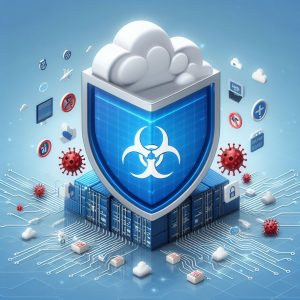
III. Review of ClamAV Antivirus
ClamAV operates using open source engines inspecting suspicious files, emails and other content against extensive frequently updated malware signature databases cataloging telltale patterns revealing threats through pattern matching models traditional antivirus relies upon.
As network gateway scanning software, ClamAV integrates using open source Bro-IDS inspecting encrypted traffic flows in depth across local networks, email servers, firewalls or proxies identifying malware payloads transferred preventing infection spread by quarantining malicious code early through deep packet inspection capabilities inspecting more than traditional port filtering firewalls can ascertain.
Effectively ClamAV reviews the full code makeup of suspicious files rather than simply evaluating transit metadata characteristics used by firewall filters allowing drastically increased detection rates. Through polling centralized database repositories nightly containing over 8 million malware signatures, ClamAV maintains consistently up to date protections.
The tradeoff requires more processing resources inspecting full file contents rather than just selective packet properties. But protections gained against infection prove well worth costs. For environments handling externally untrusted content like email attachments or users facing higher risks, ClamAV offers formidable inspection depth substantially more potent than legacy firewalls or basic endpoint protection lacking modern heuristics against threats.
IV. Comparison of Open Source Antivirus Software
While all credible open source antivirus options share user transparency benefits from public peer development and review, differences distinguish solutions optimal for specific cases. Weighing protection capabilities, system requirements and compatibility across targeted use situations facilitates tailoring the ideal selection.
Protection Effectiveness Testing firms like AV Comparatives closely measure antivirus software effectiveness identifying and neutralizing live threats across widespread categories in real world simulations benchmarking capabilities objectively. Open source engines like Comodo and Avast actually exceed detection rates of premium competitors significantly in recent testing thanks to community innovation outpacing profits-first development models.
System Performance However with great power comes proportional resource demands scanning intensive file inspection tasks inevitable show efficiency and optimization limitations in open source solutions lacking commercial developmental resources. ClamAV burdens lightweight systems considerably under load. Less intensive alternatives better suit older hardware still benefiting from threat detection using slower open methods.
Software and Platform Compatibility Due to voluntary nature of community development efforts, open source antivirus software experiences delays expanding compatibility breadth across all variations modern platforms and configurations quickly without dedicated full-time engineering efforts commercial software sustains. Consequently some solutions like Comodo lack MacOS and mobile ports while Avast focuses Windows primarily for now.
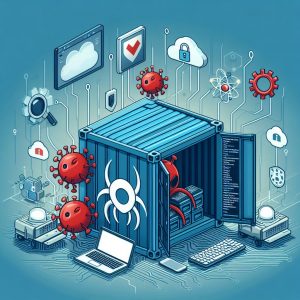
V. Overview of Real-Time Antivirus Scanning Engines
All antivirus tools rely on efficient scanning engines evaluating digital content like software files or data packets in real-time seeking indicative patterns revealing malicious payloads as traffic transits networks needing quarantine. Two primary methodologies exist bearing tradeoffs around protection depth versus demands exerted on computing resources.
Signature-based Scanning Legacy antivirus scanning typically operates using signature-based detection matching content like files or network packets against vast databases cataloging unique textual patterns or hash signatures known to indicate threats. This allows quickly scanning high volumes of content for matches against continuously updated threat libraries compensating for superficial inspection depth per item.
Heuristic Scanning More advanced real-time scanning conducts contextual behavioral analysis while content transits environments to judge actions suggestive of malicious motivations like unusual modifications of critical system files. This heuristic approach offers broader protection for emerging threats lacking signatures yet but imposes far greater processing overhead analyzing activity deeply when antivirus acts as network gatekeeper. Open source Bro-IDS exemplifies this methodology.
For lightweight systems, traditional signature matching methods may suit needs if combined with layered protections like firewalls while more robust environments better tolerate intensive heuristic scanning providing vastly increased detection rates despite costs. Integrating both methodologies creates ideal threat visibility.
VI. Open Source Cybersecurity Tools
Beyond antivirus scanning software, multiple crucial defensive cybersecurity tool categories see capable open source options fitting deployment needs and promoting user trust through transparency – especially for resource constrained teams.
Network Firewalls Trustworthy open source firewalls like IPFire, OPNSense and pfSense incorporate industry standard deep packet inspection protecting against malware payloads using the same highly vetted inspection engines core to ClamAV reaping excellent network threat detection rates at zero cost.
Intrusion Detection Robust open source network monitoring platforms like Suricata leverage heuristic anomaly detection spotting subtle malicious network events premium tools overlook. Traffic analysis reveals threats missed by firewalls providing layered insight.
Spam Filters Specialist anti-spam apps like Rspamd and ASSP bring enterprise-grade mail filtering tuning out spam and phishing uniquely softened through open community collaborative tuning keeping pace with email threats better.
When weighing overall IT security ecosystem budgeting, open source solutions provide perfectly credible alternatives to expensive premium bundles at no cost while fostering local user trust through custom inspection and community accountability massive vendors lack incentives providing.
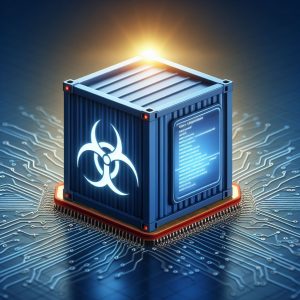
VII. Conclusion
Evaluating the mounting case for open source security software in combating increasing cyberattacks reveals substantial benefits unlocking community innovation – transparency and unrestricted access cultivate local trust while circumventing vendor lock-in towards sustained protection against threats through collaborative development more responsive to user needs directly.
The credibility seen by benchmark testing firms repeatedly confirming leading open source antivirus engines like Comodo and Avast actually exceed detection rates of expensive commercial competitors signals immense opportunity for smaller organizations. Even supplemented by specialized open source firewall, filtering and intrusion systems contributing defense-in-depth protective layers tightly integrated together, resource constrained teams can assemble formidable security postures rivaling costly piecemeal proprietary bundles elsewhere for zero cost through open source software advantages lowering barriers securing operations against attacks significantly.
Introduction
As cyberthreats grow more sophisticated by the day, antivirus software remains an essential defense protecting devices and data from malware and phishing attacks. Yet traditional signature-based antivirus solutions strain under escalating volumes of emerging threats while bogging down system performance through on-device scanning.
This is where revolutionary cloud antivirus steps in – harnessing vast cloud analytic capabilities to outsmart threats in real time using minimal local device resources. By performing the heavy lifting within distributed cloud infrastructure, next-gen cloud antivirus solutions deliver far superior protection without dragging down computers.
This guide explains the immense advantages cloud antivirus holds over traditional antivirus, how cloud-based threat detection operates, top solutions to consider plus what to evaluate when selecting the ideal provider securing your environment.

How Cloud Antivirus Works
Cloud antivirus shifts traditional malware scanning duties away from individual user devices uplifting into massively scalable cloud analytics engines capable of far deeper inspection protecting hundreds of millions of endpoints. This next-gen architecture unlocks game-changing advancements foiling sophisticated modern threats.
Minimal On-Device Software By minimizing software running locally on each user device, cloud antivirus maximizes performance available for actual applications and tasks. Tiny, fast on-access and download scanners check new files casually in the background relaying samples into the cloud for rigorous analysis without intensive local strain.
Broad Data Lake Threat Intelligence With exponentially more processing muscle, cloud platforms ingest vast threat data lakes continuously fed by international cyber intelligence networks to train smarter, more agile AI models detecting emerging attack patterns better than any single antivirus agent. Data from worldwide attacks and tools informs smarter defenses.
Predictive Analytics Scaling such immense predictive power creates opportunities for evaluating entire software behavior lifecycles – not just static signatures – to gauge likelihood of malicious intent early before infections occur. Cloud antivirus taps global telemetry to outsmart threats based on contextual analytics.
Rapid Response at Scale Identifying and blocking newly discovered malware becomes near instantaneous through cloud antivirus architecture able to push rapid signature updates simultaneously across tens of millions of endpoints within minutes stopping brand new threats promptly vs traditional antivirus solutions taking days to distribute Matter Updates slowly.
Centralized Management Monitoring and managing antivirus policy across thousands of distributed devices and users becomes vastly easier through web-based cloud dashboards allowing IT administrators transparent oversight enacting controls organization-wide from one intuitive portal vs legacy software necessitating tedious endpoint policy configuring individually.
Benefits of Cloud Antivirus
Migrating to nimble cloud-based antivirus brings transformational advancements uplifting protection, performance and manageability to new heights defending against intensifying modern cyberthreats more intelligently.
Faster Threat Response Collating data from enormous global sensor networks inside vast cloud engines facilitates near instant identification of emerging threats reaching critical containment decisions far swifter than isolated traditional antivirus agents limited to just local intelligence scoped to their single host. Cloud models respond decisively faster.

Optimized Performance
With cloud antivirus shifting heavyweight processing like malware behavioral analytics entirely remotely, local devices enjoy maximized application responsiveness freed from loud exhausting on-device scans taxing CPU and disks while users work. Less on-endpoint software means speedier PCs.
Centralized Control Managing antivirus policies across scattered device fleets and dispersed users grows vastly easier from unified cloud dashboards allowing administrators to adjust configurations globally across environments vs tackling systems individually through legacy antivirus management headaches.
Savings at Scale Streamlining administration through centralized cloud controls while supplying universal deep learning threat detection capabilities across entire organizations cuts costs and headaches supporting growing device quantities immensely versus traditional antivirus demanding individual agents installed, updated and monitored independently ultimately restricting scalability.
Top Cloud Antivirus Software
Many capable solutions exist but category leaders Bitdefender GravityZone, Kaspersky Endpoint Security Cloud and Trend Micro Apex One distinguish themselves providing extraordinarily refined cloud antivirus protection tailored safeguarding demanding enterprise environments without compromises.
Bitdefender GravityZone Arguably defineing cutting edge cloud antivirus innovation presently, Bitdefender GravityZone flaunts over 30 worldwide datacenter hubs interconnecting threats intelligence across 500 million sensors globally for unrivaled malware detection rates nearing 99.98% accuracy. Self-learning algorithms train against new attack techniques ahead of competitors.
Kaspersky Endpoint Security Cloud Renowned for top-tier antivirus protection, Kaspersky’s cloud offering draws upon specialized machine learning closely monitoring system events forecasting application behavior to categorize legitimate and malicious activities with minimal false positives. Automatic roll back capabilities restore damaged endpoints effortlessly.
Trend Micro Apex One Veteran endpoint security specialist TrendMicro impresses modernizing into exemplary cloud antivirus functionality through Apex One marrying the best of signatureless machine learning, behavioral analysis and proven signature-based detection outsmarting threats comprehensively while optimizing cloud platform support protecting hybrid infrastructure.
How to Choose Cloud Antivirus
Migrating towards cloud-centric antivirus protection offers profound advantages but variations between vendors warrant consideration picking optimal solutions fitting needs. Use these tips judging critical safety capabilities, management controls andreporting transparency.
Current Antivirus Gaps – Consider existing endpoint antivirus shortcomings on dimensions like slowing systems, burdensome updates or inadequate visibility that frustrate constituents which smarter cloud-based software can upgrade substantially.
Detection Rates – Cloud analytics uplift malware detection rates substantially over legacy antivirus but measurement methodologies between vendors vary. Scrutinize real-world testing by unbiased organizations like AV-TEST evaluating effectiveness.
Management Interface – Centralized cloud dashboards owning simplified visibility and controls over entire antivirus deployments revolutionizes IT efficiency. Rigorously test admin consoles assessing presentation of security insights, policy controls, alerting workflows and investigation tools.
Hybrid Support – Transitioning workflows benefiting both on-premise and cloud resources remains reality for most organizations presently. Ensure chosen antivirus solutions excel specifically managing hybrid environments with unified data insights and policies spanning endpoint footprints.
Threat Intelligence – Key differentiators between antivirus tools boil down to sophisticated threat intelligence capabilities powered by machine learning algorithms which grow more advanced each season. Continuous feature evaluation is advised determining the most capable platforms leveraging cyber threat analytics.

Conclusion
Evaluating the staggering capability advancements unlocked moving from traditional on-device antivirus software to modern cloud-based solutions reveals vast untapped potential securing organizations against increasingly stealthy malware and exploits.
Cloud antivirus eliminates the constraints of legacy signature scanning and pattern matching by uplifting protection into vastly more powerful cloud analytics engines capable of deeper inspection of emerging threats seen globally. Lower local resource usage optimizes user endpoint performance while centralized management dashboards ease administration enormously.
Top solutions like Bitdefender GravityZone and Trend Micro Apex One excel against competitors particularly leveraging pooled threat intelligence and specialized machine learning to fracture malicious attacks automatically even zero-day threats lack signatures for. For strongest real world defense fortifying endpoints ahead of soaring cyberattacks, cloud antivirus leads the path forward.




























